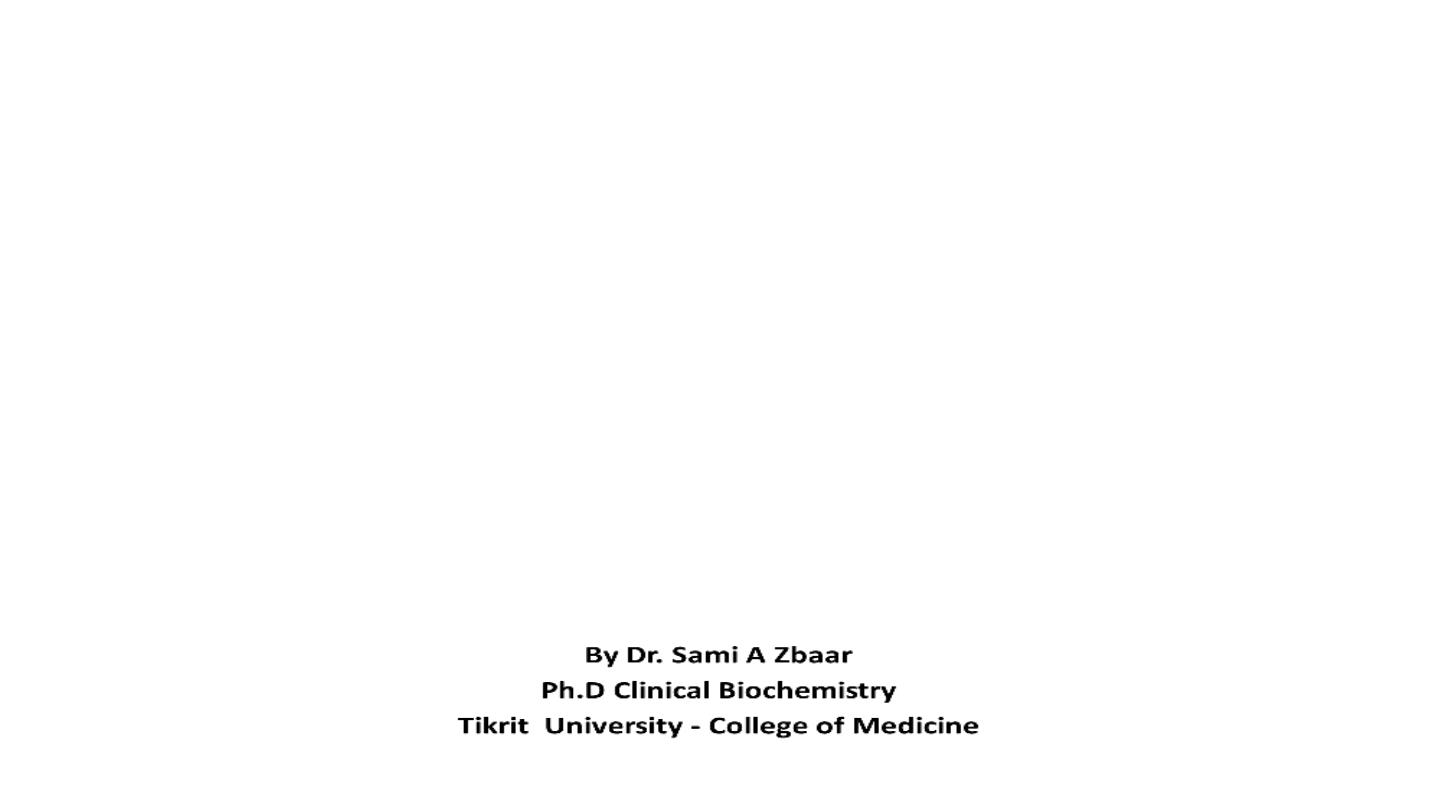
Gluconeogenesis
The formation of glucose or glycogen from non carbohydrate precursors
Is called gluconeogenesis

Significance of gluconeogenesis
The body must able to make its own glucose, WHY?
• Humans consume 160 g of glucose per day, 75% in the brain.
• Body fluids contain only 20 g of glucose.
• Glycogen stores yield 180-200 g of glucose
• GLUCONEOGENSIS is used to restore the depleted glycogen and to
sustain normal activity.

• Some tissues require a continuous supply of glucose as a metabolic fuel like brain ,
erythrocyte, lens and cornea of the eye , adrenal medulla and tumor cell .
• Liver glycogen can meet these needs for only 10–12 hours in the absence of
dietary intake of carbohydrate.
• Gluconeogenesis is used to clear the product of metabolism of other tissues from
blood like lactate and glycerol and carbon skelton of amino acids
In gluconeogensis, glucose is formed from:
• Lactate
• pyruvate
• glycerol (derived from the backbone of triacylglycerol)
•
α-ketoacids (derived from the catabolism of glycogenic amino acids.

During an overnight fast
•
〜90% occurs in the liver
• 10% occurs in the kidneys
During prolonged fasting
• kidneys become major glucose-producing organs, contributing an
estimated 40% of the total glucose production.
• Location : gluconeogenesis take place in liver and in lesser extend in
the kidney (mitochondrial and cytosol)

REACTIONS UNIQUE TO GLUCONEOGENESIS
• Glycolysis and gluconeogenesis share the same pathway but
are not identical
• Seven of ten reactionsof gluconeogenesis are reverse of
glycolytic reactions and are used in the synthesis of glucose
from lactate or pyruvate.
• three of the reactions are irreversible bypassed by
4 Alternate Reactions catalyzed by different enzymes
1)Carboxylation of pyruvate.
2)Decarboxylation of cytosolic oxaloacetate.
3)Dephosphorylation of fructose 1,6- bisphosphate.
4)Dephosphorylation of glucose 6-phosphate
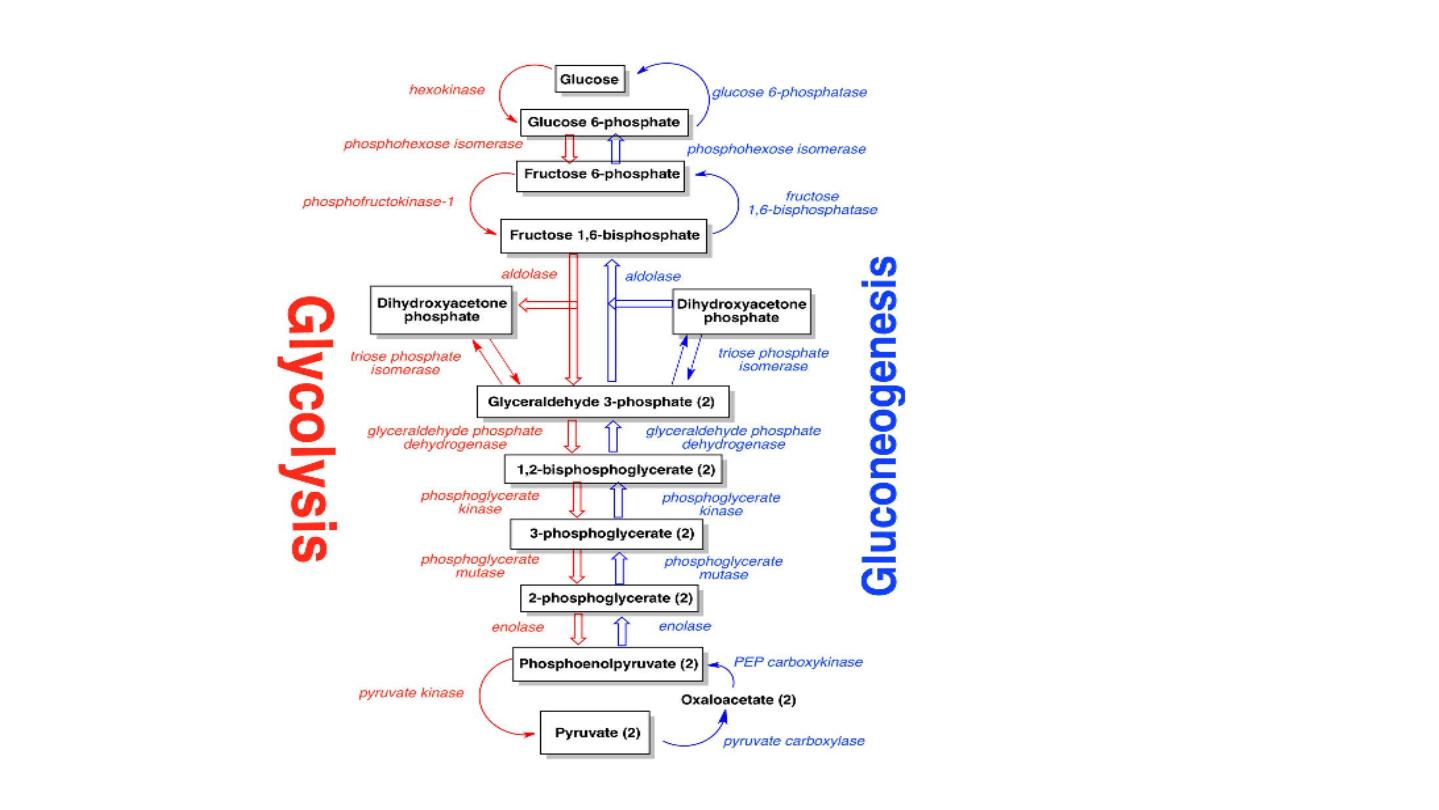
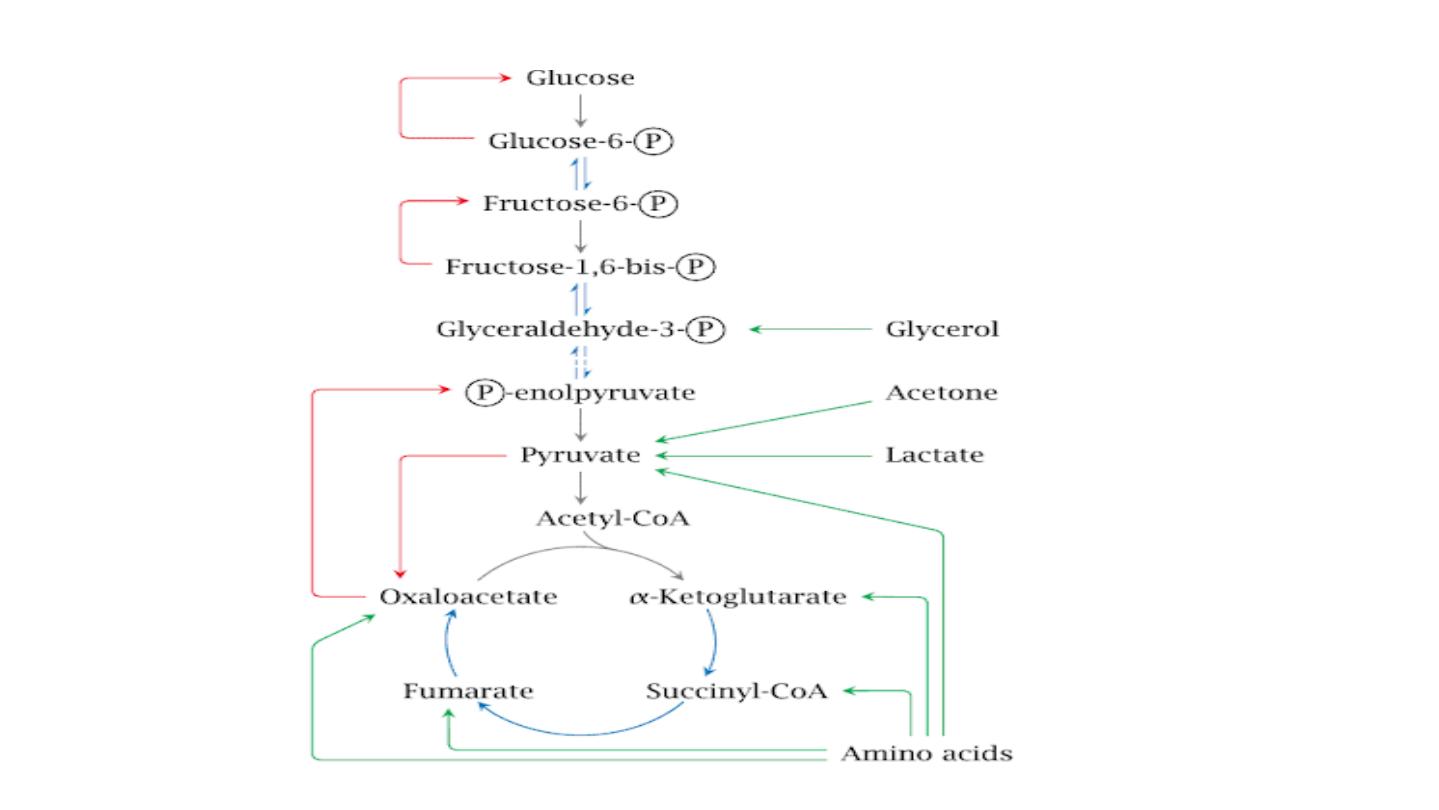

SUBSTRATES FOR GLUCONEOGENESIS
1. Glycerol
• Glycerol is released in adipose tissue and is delivered by
the blood to the liver.
• It’s phosphorylated by
glycerol kinase
to
glycerol
phosphate
, which is oxidized by
glycerol phosphate
dehydrogenase
to
dihydroxy acetone phosphate
an
intermediate of glycolysis.
• Adipocytes cannot phosphorylate glycerol because of
lacking glycerol kinase.
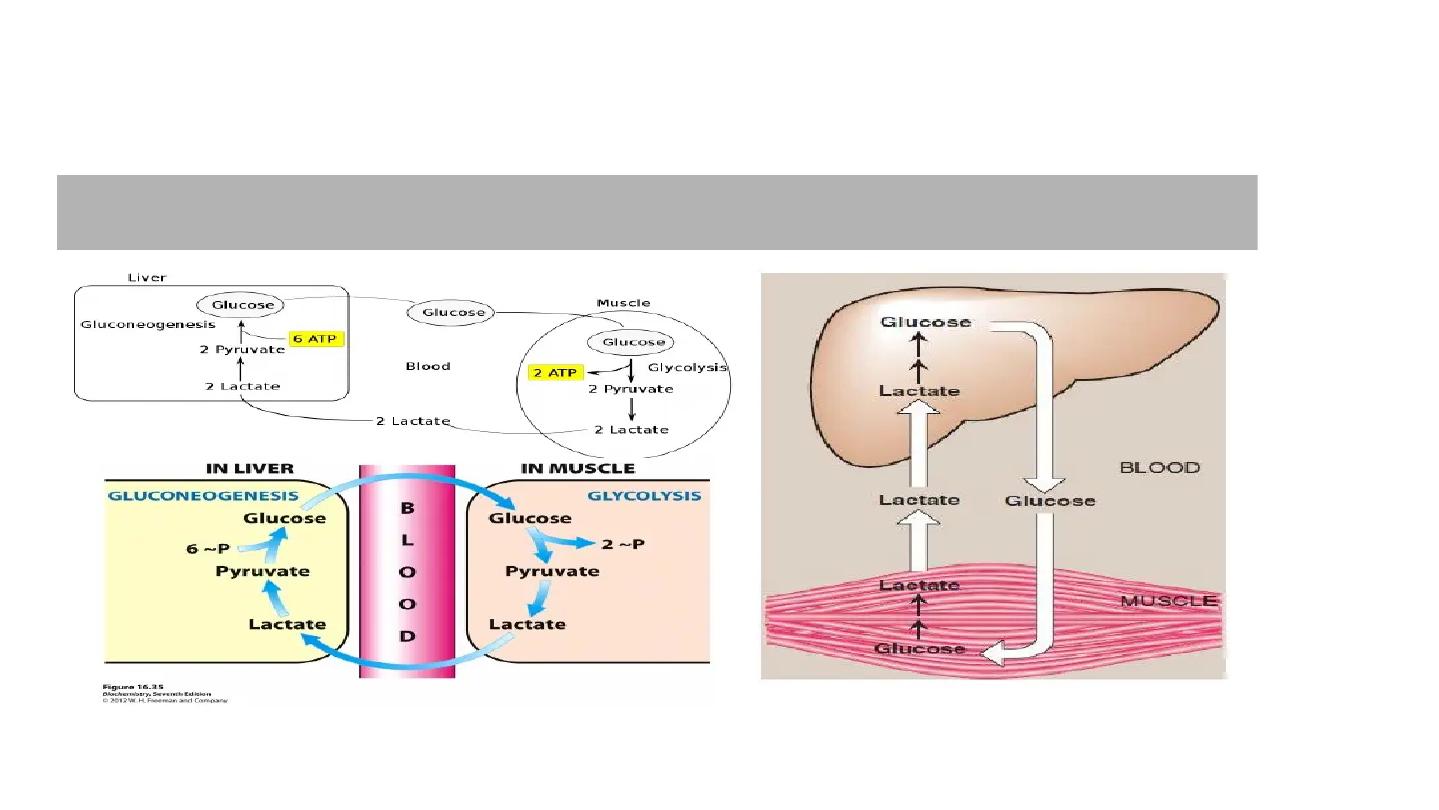
2. Lactate- Cori Cycle
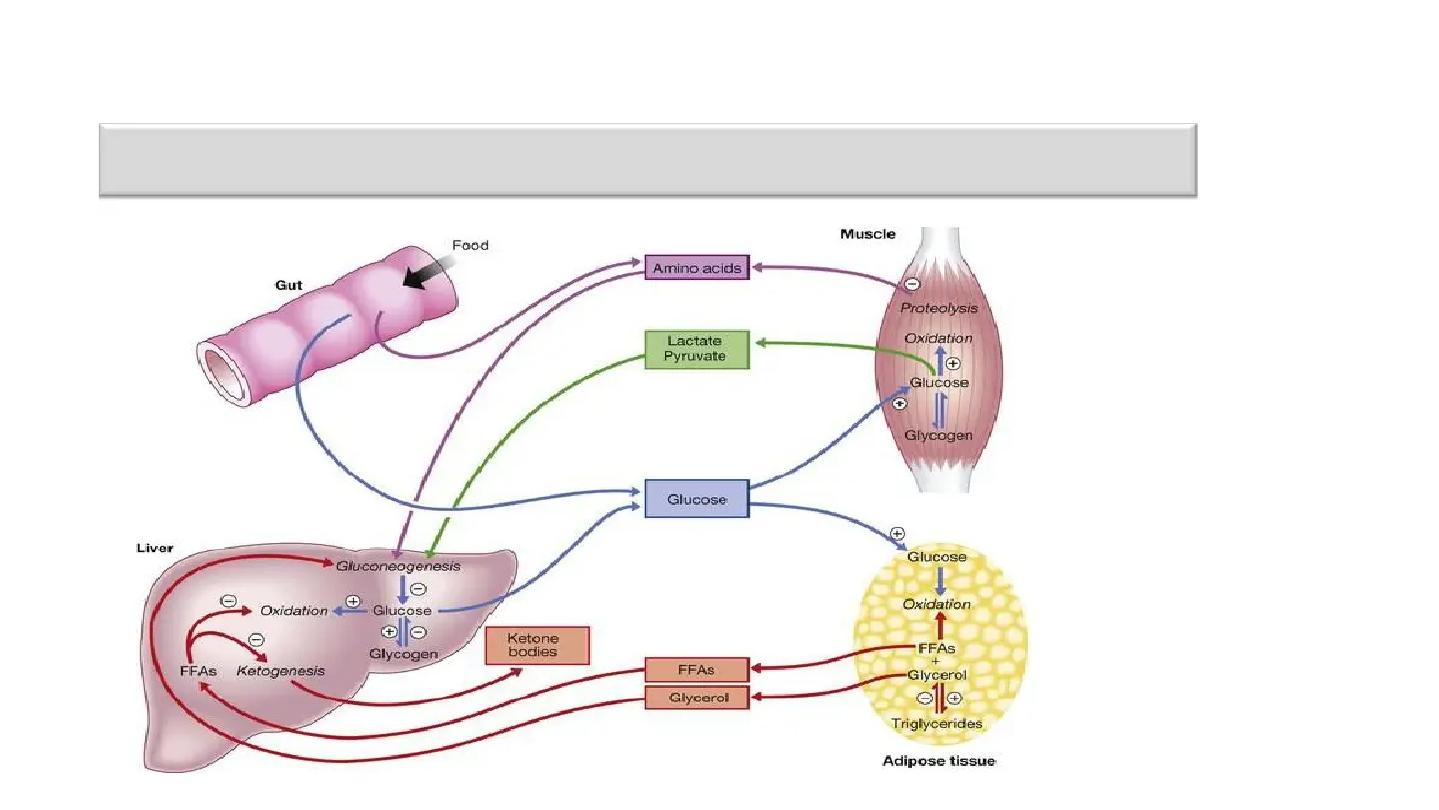

3. Amino acids
• Amino acids derived from hydrolysis of tissue proteins
during a fast.
• Α -Ketoacids
, such as α -ketoglutarate, are derived from
the metabolism of glucogenic amino acids .
• Α -ketoacids can enter the TCA cycle and form
oxaloacetate a direct precursor of phosphoenol pyruvate .

• Energetic of gluconeogenesis
Is energetically expensive process for each glucose molecule produce
from pyruvate six high energy phosphate groups are required
4 ATP
2 GTP
An addition two molecules
of NADH

• Regulation of gluconeogenesis
Substrate availability
(glycerol, lactate amino acid …)
Gluconeogenesis are stimulated by :
Fasting , prolonged exercise , high protein intake , stress (increase of
epinephrine level)
Enzymatic regulation
1-pyruvate carboxylase
2-phosphoenolpyruvate carboxykinase
3-fructose 1-6 bisphosphetase
4- glucose 6 phosphatase (present only in liver and kidney)
Glucagon increases synthesis of these enzymes while insulin inhibits them

Pentose phosphate pathway
The pentose phosphate pathway is an alternative route for oxidation of
glucose which lead to specialized products needed by the cells.

Significance of PPP
1-produce
NADPH
that is required for reductive biosynthetic reactions
such as those of cholesterol biosynthesis, bile acid synthesis, steroid
hormone biosynthesis, and fatty acid synthesis and protective effect by
removing free ridecals .
2- generate five carbon sugars, particularly
ribose-5-phosphate
that is
required for purine and pyrimidine nucleotide biosynthesis

This pathway consist of tow phase
Phase one three molecules of G6P converted to three molecules
of CO2 and three molecules of ribulose 5 phosphate
Phase two these ribulose 5 phosphate molecules rearrange to
produce
two
G6P
molecules
and
one
molecules
of
glyceraldehyde 3 phosphate
• The reactions of the PPP operate exclusively in the cytoplasm in all
cells
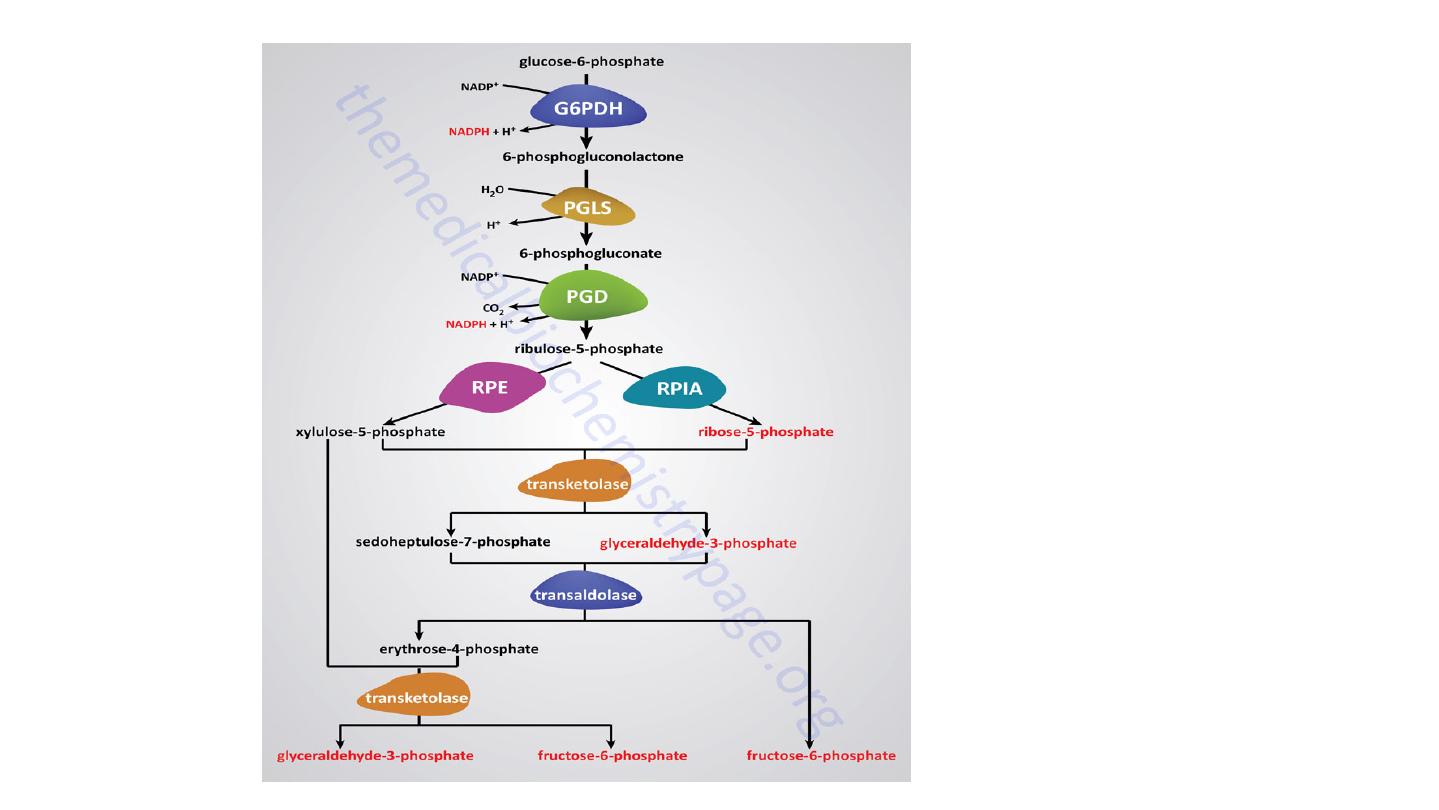

Disorder of PPP
• Deficiency of glucose 6 phosphate dehydrogenase
Genetic defect of G6PD are common in Mediterranean population
mainly males who are effective. when people deficient in G6PD are
subjected to oxidative stress from
infection or drug like anti-malarial
drug
or when they have eaten
fava beans (favism) (contain divicine)
produces clinical manifestation
(hemolytic anemia)
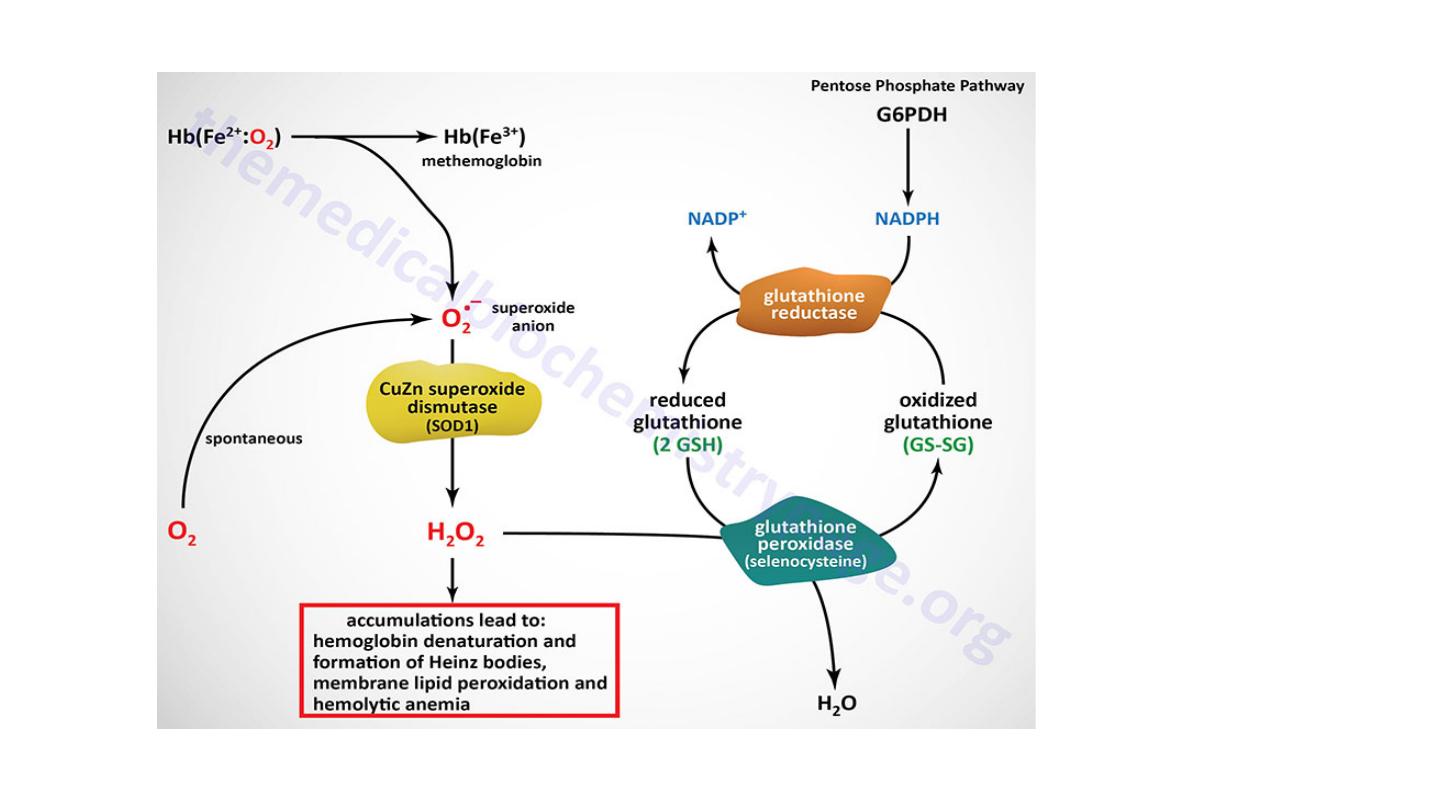
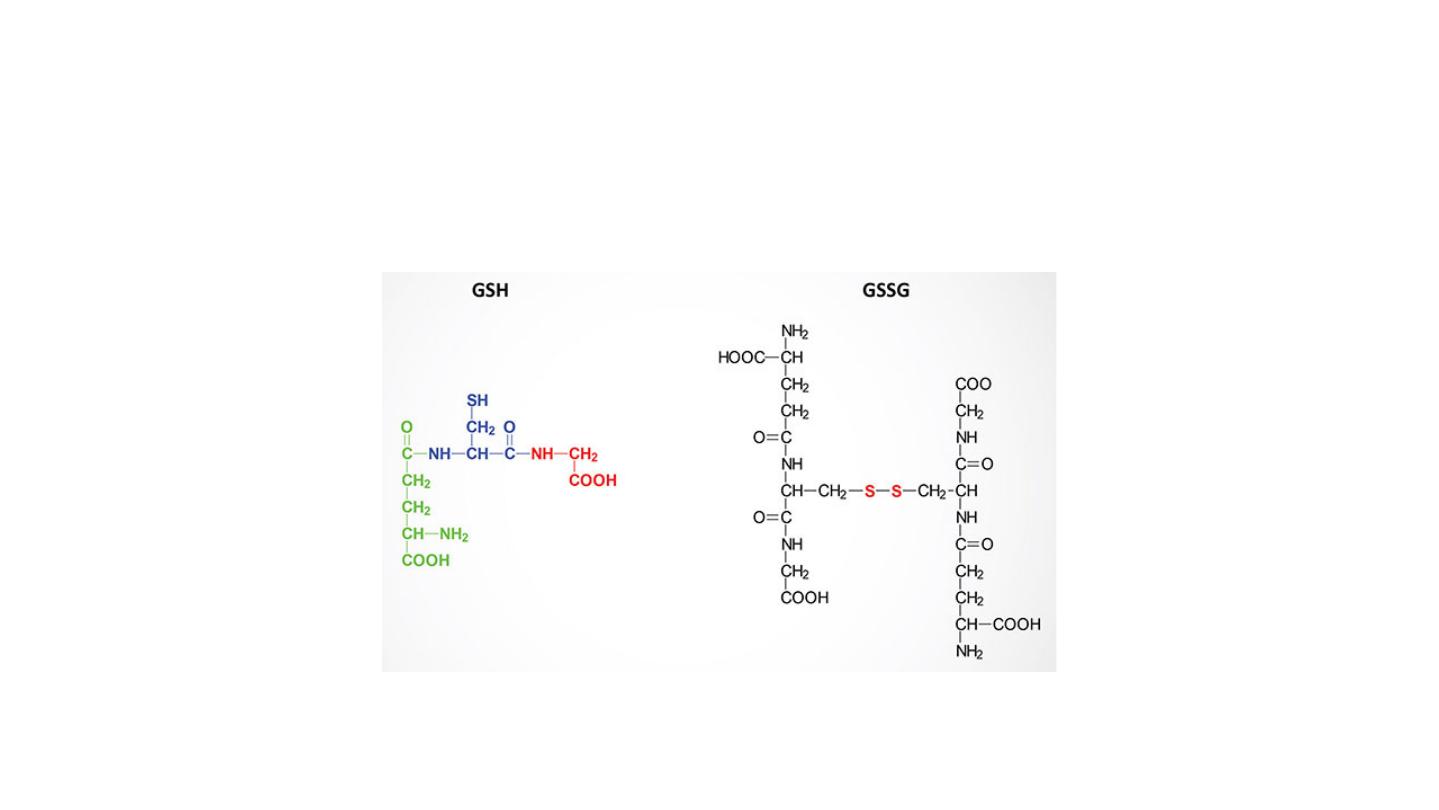

• Regulation of PPP
The first step of PPP is rate limiting step . The activity of G6PD enzyme
is regulated by the level of NAPDH which is a competitive inhibitor for
G6PD
In well fed condition the ratio of
NADPH/NADP decrease
and G6PD
stimulated
In starvation the ration
NADPH/NADP increase
so G6PD inhibit
